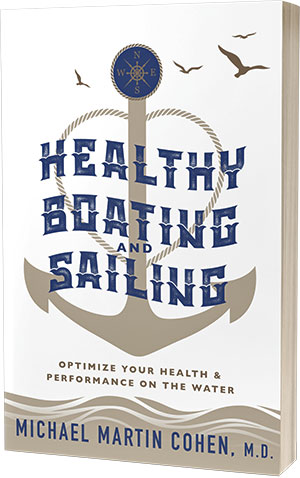Time and the Sailor's Brain
by Michael Martin Cohen, M.D
 Dr Michael Martin Cohen is a practicing neurologist and a keen sailor.
Dr Michael Martin Cohen is a practicing neurologist and a keen sailor."The distinction between the past, present, and future is only a stubbornly persistent illusion".
- Albert Einstein1
"Put your hand on a hot stove for a minute, and it seems like an hour. Sit with a pretty girl for an hour, and it seems like a minute. That’s relativity."
– Albert Einstein
The previous article “Time on the Water” dealt with clocks, focusing on the circadian clocks. The master clock – the SCN located in the hypothalamus – keeps fairly good time; accurate to a few minutes every 24 hours. It does need to be reset each day (mainly by light) or it will continue to run a little fast or slow.
 Figure 1a: Past, Present and Future
Figure 1a: Past, Present and Future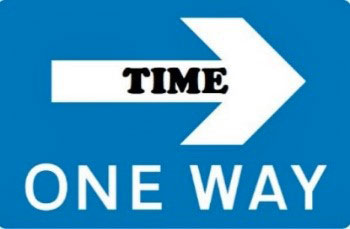 Figure 1b: The Arrow of Time
Figure 1b: The Arrow of TimeAs we saw in the last article there are clocks all over the body to help regulate their own business. Some of the clocks are not very obvious such as those in the kidney, liver, and skeletal muscle. (Figure 2). They are doing their thing behind the scenes.
The heart has its own clock / pacemaker system which beats at a steady pace (resting heart rate) unless it needs to increase for whatever reason. Breathing also has a steady rate and rhythm.
In fact, the rhythm and timing of the heat and lungs (average 72 and 12 beats per minute) represent two of our most important “vital signs.”
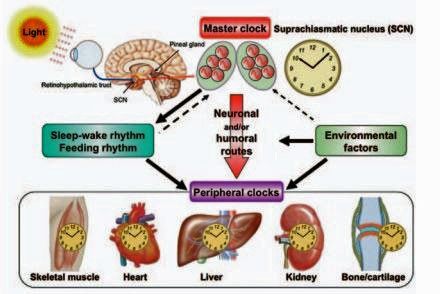 Figure 2: Peripheral Clocks
Figure 2: Peripheral ClocksIn addition to the circadian clock and all of the “Peripheral” clocks in Figure 2, we have a number of other clocks and timing mechanisms in our brain. The 21st century is the century of connected brain networks, each specializing in a different function.
As brain networks developed throughout evolution, each network developed its own clock or timing mechanism to take care of its specific timing needs. (Figure 3). So, keeping time is a distributed function.
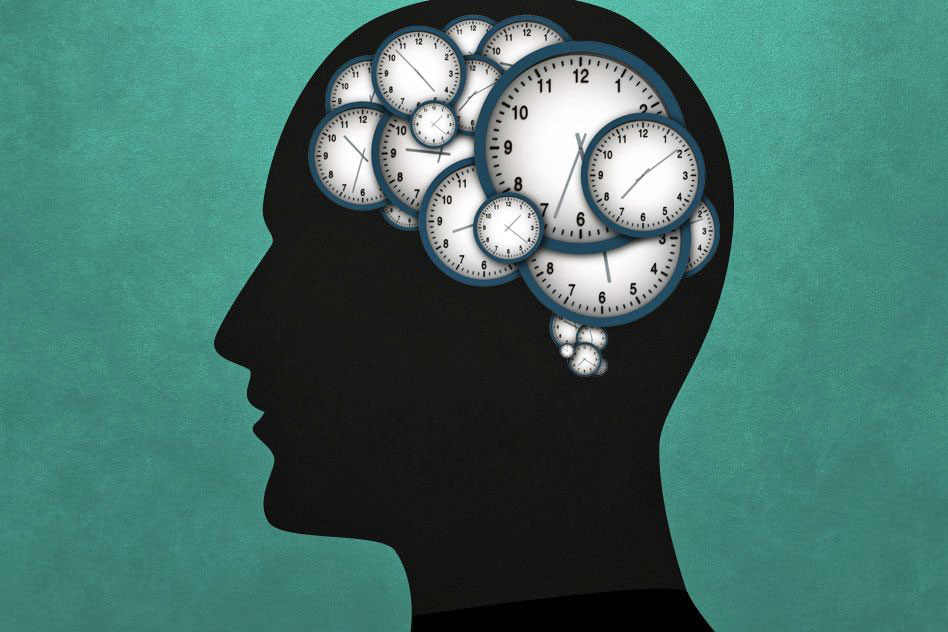 Figure 3: Multiple clocks in the brain
Figure 3: Multiple clocks in the brainLet’s look at a few scenarios which will provide insight into how time affects essentially everything we do on the water:
Scenario #1: Timing Mechanisms at the level of perception
You are returning from a day of boating and encounter a thick fog.
You hear the sound of a familiar buoy and you are trying to localize it. It seems to be off to your right but is it in front, to the side, or behind you?
We discussed this scenario in Chapter 2, but what does it have to do with time?
As discussed in my book 'Healthy Boating & Sailing', the brain is able to time when sound waves arrive at each ear. By comparing the arrival at each ear, it can determine roughly where the sound waves are coming from.
At sea level, sound waves travel at 340 meters per second and your head is only about 0.175 meters wide. The difference in the time it takes for sound waves to reach your left ear after they have reached your right ear is about one half of a millisecond (one thousandth of a second).
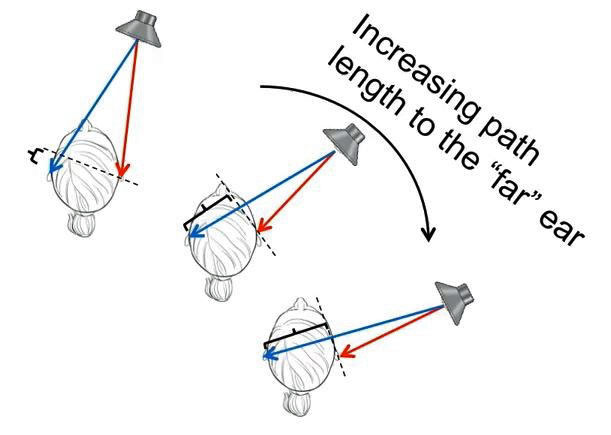 Figure 4: Time difference for a sound to reach each ear.
Figure 4: Time difference for a sound to reach each ear.The maximum difference would occur if the sound waves were coming directly from either side. Sound waves would obviously reach both ears at the same time if the sound were coming from directly in front or behind.
See Chapter 2 of 'Healthy Boating & Sailing' on ways to improve your sound localization on the water.
If you are not impressed that your brain can differentiate sound waves at the level of ½ thousandth of a second, then nothing will impress you! What about vision?
In one sense we are always living in the past. It is well documented that our consciousness lags behind the actual events by about 80 milliseconds. Afterall, it takes time for the light or sound waves to reach you (minimal for light), so that when you think an event is actively occurring, it has already happened! It takes at least that long for information to reach the brain and be processed before it is “sent along” to consciousness.
The 80-millisecond rule plays all sorts of perceptual tricks on us. Let us imagine someone who is clapping his or her hands. As long as that person is less than 30 meters away, you see and hear the clap simultaneously.
But beyond that distance, the sound arrives more than 80 milliseconds later than the light, and the brain can no longer match sight and sound. And the transition is abrupt: by taking a single step away from you, the hand-clapper goes from in sync to out of sync.
Similarly, an effect we have all noticed lately, as long as a TV or Zoom is synchronized within 80 milliseconds, you won't notice any lag. However, if the delay is any longer, the two abruptly become disjointed.
Events that take place faster than 80 milliseconds fly under the radar of consciousness. Realize what is happening: the brain, your brain, is stitching together the visual and auditory information to create a unified picture of reality.
At the other end of the spectrum is the phenomenon we have all experienced watching a lightning strike and then counting (timing) until the arrival of the thunder2.
Scenario #2: Central movement clocks
You are racing your Laser as you have done for years but the prior night you had too much to drink, difficulty sleeping, and today nothing is going right. Everything is slow. It takes more time to do everything.
Although the brain has numerous distributed clocks, there does seem to be a couple of network clocks that are important for coordinating the timing of conscious actions – movement, especially coordinated movements.
And of course, virtually everything we do on a boat (and much of what we do on land as well) requires very intricate and sophisticated timing of our muscles. From tying a bowline, to quickly raising a sail or an anchor, to hiking out, to tacking with the rapid shifting of your body from port to starboard; all of these actions and many others require precise timing.
Some muscles need to contract, others to relax and with enough repetition, the timing of these complex contractions and relaxations becomes “hard-wired” in the brain.
You no longer have to think about the rabbit coming out of the hole and running around the tree and back into the hole, it is a well-timed fluid series of motions that occurs so smoothly that you don’t even think about the components.
Sometimes you are responding to something in the environment and other times your movements are self-generated.
Figure 5 illustrates a couple of different motor systems and it is not important to understand them. Just realize that much of your brain is involved in these motor movements especially if they are in response to something in the environment.
The brain regions include the cortex, the basal ganglia, and the cerebellum for you neuro-geeks.
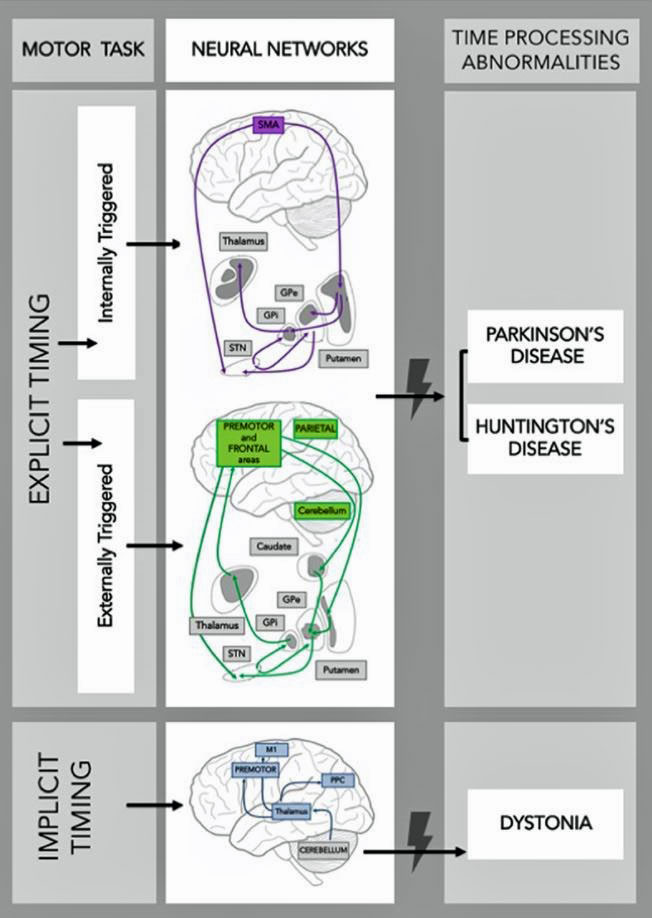 Figure 5: Different types of motor timing
Figure 5: Different types of motor timingAlthough these clocks are hard wired, they can still be interfered with by sleep loss or drugs and alcohol.
Scenario #3: How good are we at estimating time?
You are in your J22 getting ready for the start of the race. There is one minute to the start and you are on a starboard tack headed for a chosen spot on the starting line. You are nervous, breathing is rapid, and your heart is racing. You need to precisely estimate the time so that you hit the line with acceleration but don’t go over too soon.
The simple answer is not that good. And like many things in life, our ability to estimate time increases with practice and decreases with age (ugh). This is true of both prospective and retrospective timing.
Prospective timing is estimating how much time is left on the yellow light while driving a car or how much time until you cross the line at the beginning of the race. Retrospective timing is – “how long have we been on this tack”?
Prospective is trying to use your brain as a stopwatch. Retrospective is basically estimating how long it would have been if you had turned on your stopwatch before. Both prospective timing and to a lesser extent retrospective timing are impaired by increasing cognitive load.
That is, the more complex things your mind is doing the worse you will be at estimating time. So, unless our J22 sailor is a veteran, the combination of his rapid heart rate and breathing – and the attendant anxiety about the start will definitely interfere with his estimation of time left.
Scenario #4: Internal clock versus external clock?
You are on a solo blue water passage and everything is ideal: the boat, the weather, the wind, and you. You are peaceful and almost meditative. Time seems to stand still.
If I say “the time just flew by” what does that really mean? Does that mean that I would accomplish more or less in that time? How about “Time flies when you’re having a good time.” Or “A watched pot never boils.”
Such statements about time speeding up or slowing down are inherently ambiguous because it depends on which clock you are referring to. By convention, statements about time speeding up or slowing down refer to the apparent speed of the external clock. So “Time flies when you’re having a good time” means that the external clock on the wall seems to have sped up – even though that is obviously not the case.
It has been known since the time of William James’s observation in the 19th century that THC creates the perception of external time slowing down. Of course, that means that THC is actually causing the internal clock(s) to speed up.
In one study subjects were required to tell the scientist when 60 seconds had elapsed. After being given THC, the average was only 42 seconds, consistent with speeding up the internal clock(s).
So, the point of all of this is that our perception of time is subjective and not objective like the external clock. Our brain creates a sense of time, primarily from three sources:
- Attention: Our experience of the present – this is the most important
- Memory: our experiences of the past
- Anticipation: our expected experience of the future
Together, these mechanisms inform what information we respond to in any given moment. In fact, at any moment we are only aware (attention) of 3 or 4 things. We sew these scraps of information together to give an impression of a whole.
We already have a great deal of knowledge (memory) and predictions (anticipation) about what is going to happen next. Using our memory, we throw out hypotheses and test them against what we perceive.
Attention is a limited capacity resource, so we selectively attend to relevant stimuli only. Our memory largely informs this, telling us what information is important or novel. Unlike clock time, the time you directly experience isn’t steady and constant. It’s continually being influenced and distorted by variables linked to the three mechanisms above.
But attention seems to be the most important here, since in order to estimate duration, we need to pay attention to the passage of time. The question of why time speeds up or slows down is all related to attention. So, if we attend to time at the present moment, time slows down (the “watched pot”). But if we are distracted from time then time speeds up very quickly.
One other aspect of attention is important. If the experience which is holding your attention is positive / pleasant then time seems to speed up. On the other hand, if the experience which is holding your attention is frightening, internal time seems to slow down.
That is what is presumably happening to people who are involved in terrible accidents. Invariably they report that time dilated (slowed down) markedly and they can often recall multiple details of the accident.
For those of you who have read Chapter 14 of my book “Healthy Boating and Sailing” this discussion of internal versus external clocks should recall the discussion of mindfulness meditation and “flow state.”
I think it is reasonable to think of that blue water sailor in the fourth scenario, focused on his task, as being in a state of mindfulness. Time may pass very quickly and if her or she approaches a “flow state” they could also be described as entirely “off the clock.”
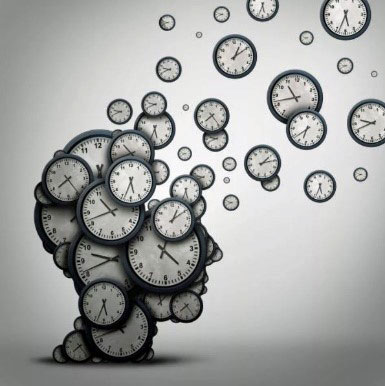 Figure 6: Clocks, clocks, and more clocks
Figure 6: Clocks, clocks, and more clocksScenario #5: Your brain is a “Time Machine”
You are returning to the marina after a wonderful day sail. A squall comes up and, on your way back to the slip, you suddenly recall that there is a long sandbar that you need to clear. You nearly ran aground a previous time going to that marina; so, at the last minute you alter course.
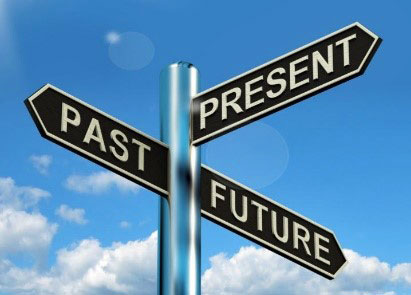 Figure 7: Past, Present, and Future
Figure 7: Past, Present, and FutureIf the present is as “thin” a slice of time as the signpost in Figure 7 illustrates, then as soon as we think about the present -it’s gone - it’s now in the past. In reality, we spend virtually all of our lives shuttling between the past and the future. Some of us are more or less stuck in the past (child abuse and PTSD are two examples that come to mind) and some of us can’t help thinking about what we want to do or where we want to be in the future.
The central tenet of mindfulness, meditation, Yoga, Buddhism, and most of Eastern thought is that we need to spend less time obsessing about the past and worrying about the future and more time appreciating the present.
If the brain is a time machine, how is it that the memories are stored and how do we access them. And more importantly what is the purpose of memory? Virtually all birds and mammals have a memory system so it must serve an important purpose3.
The ultimate reason for remembering the past is to anticipate (predict) the future. That’s true not only of humans but of most of the animals we are aware of. If we remember what happened to us in the past perhaps, we can avoid the same thing or something similar happening in the future.
Or if like foraging bees we remember the recent food location we can come back to the nest and dance for the other bees providing information for them to go forth into the future and bring food back to the nest.
The primary purpose of memory is to anticipate (predict) the future.
So, in scenario five the memory of nearly running aground on the sandbar alerted the boater that he needed to alter course to avoid it occurring in the very near future.
“Whew, that was close. Good thing I remembered that.”
Why did that incident make it into memory? Because events that are emotionally charged (either positively or negatively) are kept in memory and date stamped for future use. Times without novel experiences are not allotted much space in our brain – in a sense they are not given the time of day.
If you look at Figure 8, the skier had uneventful time from 12pm to 2:30 then had to dig himself out from 2:30-2:45 but although it was only 15 minutes by the external clock it took up almost half as much “spacetime” in the brain as the 2 and ½ hour uneventful ski. And later the crash takes up only 1 minute but also about as much spacetime in the brain as the 2½ hour early ski.
These memories are time stamped in the temporal lobe where they are stored for future use. As you hopefully recall from Chapter 2, the hippocampus deep in the temporal lobe takes the time information and combines it with the details of the event and where it occurred (what, where, and when) and creates a unified memory trace which can be later accessed.
So, the next time the boater is approaching that particular marina, he or she will likely recall previously being in that area and will call up the memory and avoid the sandbar.
Likewise, the skier in Figure 8 will, as he or she approaches the precipice which caused the fall last time, take note, and avoid repeating the accident. Shuttling between the past and the future – our brain is our built-in time machine.
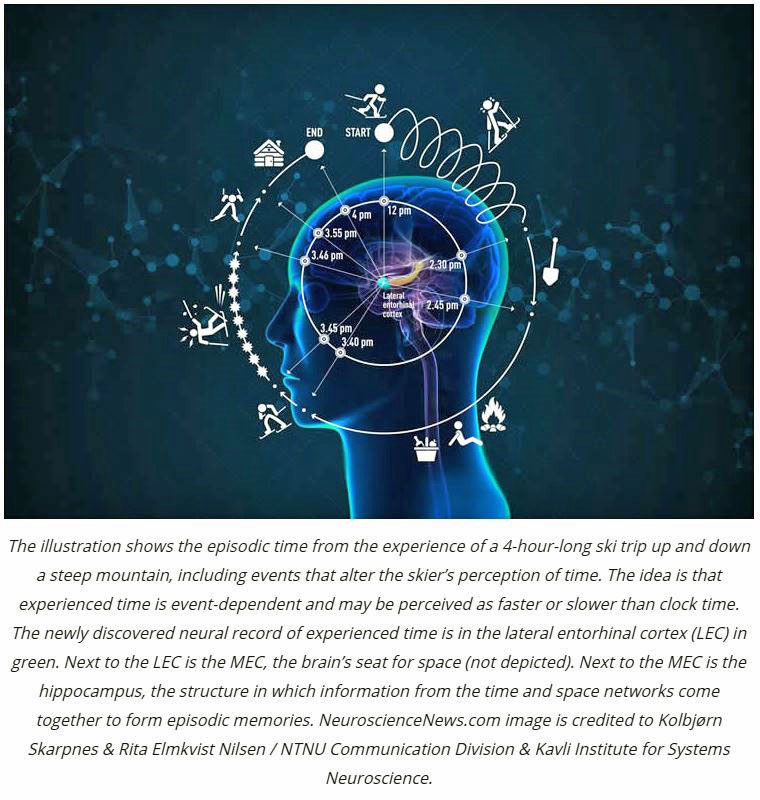 Figure 8: 4-hour ski trip but it could just as easily have been a 4-hour boating trip.
Figure 8: 4-hour ski trip but it could just as easily have been a 4-hour boating trip.1 Before we start, I want to set one thing straight. Despite the Einstein quotes, we are not going to get into the unsolvable discussion about the nature of time. Many modern physicists and philosophers believe in a “block universe” also known as “eternalism” with its description of space-time as an unchanging four dimensional “block” of time including the past, present, and future.
That’s not what we actually experience. We experience the world as three dimensions of space modulated by the fourth dimension of time. The opposite of the Block Universe (or Eternalism) is Presentism – which is what we feel – with past, present, and future.
2 If you count the number of seconds between the flash of lightning and the sound of thunder, and then divide by 5, you'll get the distance in miles to the lightning:
- 5 seconds = 1 mile
- 15 seconds = 3 miles
- 0 seconds = very close
3 What is the purpose of memory? No, it’s not about dreaming of your past and wondering what’s happened to girlfriends or boyfriends from times gone by!
Dr Michael Martin Cohen, June 2021
Recent Articles
-
Hans Christian 43: Classic Bluewater Cruiser & Liveaboard Sailboat
Dec 10, 25 04:37 AM
Explore the Hans Christian 43: a legendary heavy-displacement, long-keel sailboat. Read our in-depth review of its specs, design ratios, and suitability for offshore cruising and living aboard. -
Planning Your Sailboat Liveaboard Lifestyle: An Ocean Sailor's Guide
Dec 06, 25 05:18 AM
Seasoned sailors share their methodical risk analysis for planning a secure Sailboat Liveaboard Lifestyle, covering financial, property, and relationship risks. -
Marine Cabin Heaters: The Expert’s Guide to Comfort & Safety at Sea
Dec 05, 25 06:52 AM
Choose the best Marine Cabin Heaters for your vessel. Expert advice on diesel, paraffin, and hot water systems for year-round cruising comfort.
